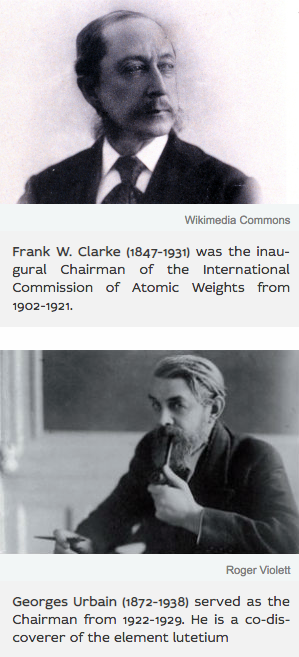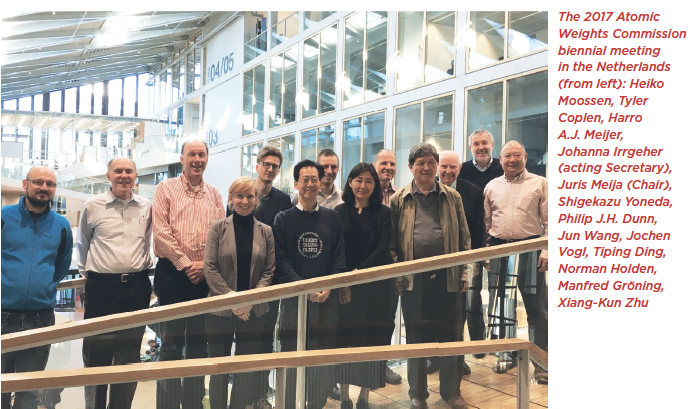 It is hard to imagine IUPAC without the Periodic Table, and in turn, without atomic weights. Atomic weights are of fundamental importance in science, technology, trade and commerce. In particular, atomic weights relate mass to molar quantities. It is therefore not surprising that the measurement of atomic weights has played a central role in the development of chemistry and continues to be a key component in the progress of discipline.
It is hard to imagine IUPAC without the Periodic Table, and in turn, without atomic weights. Atomic weights are of fundamental importance in science, technology, trade and commerce. In particular, atomic weights relate mass to molar quantities. It is therefore not surprising that the measurement of atomic weights has played a central role in the development of chemistry and continues to be a key component in the progress of discipline.
As IUPAC celebrates its centennial (iupac.org/100) and the International Year of the Periodic Table (iypt2019.org), its oldest body, the Commission on Isotopic Abundances and Atomic Weights (CIAAW), also known in IUPAC as Commission II.1, turns 120. This story is a brief history of Commission II.1 in the Service of Chemistry [1,2] and an outlook at what it is today [3].






